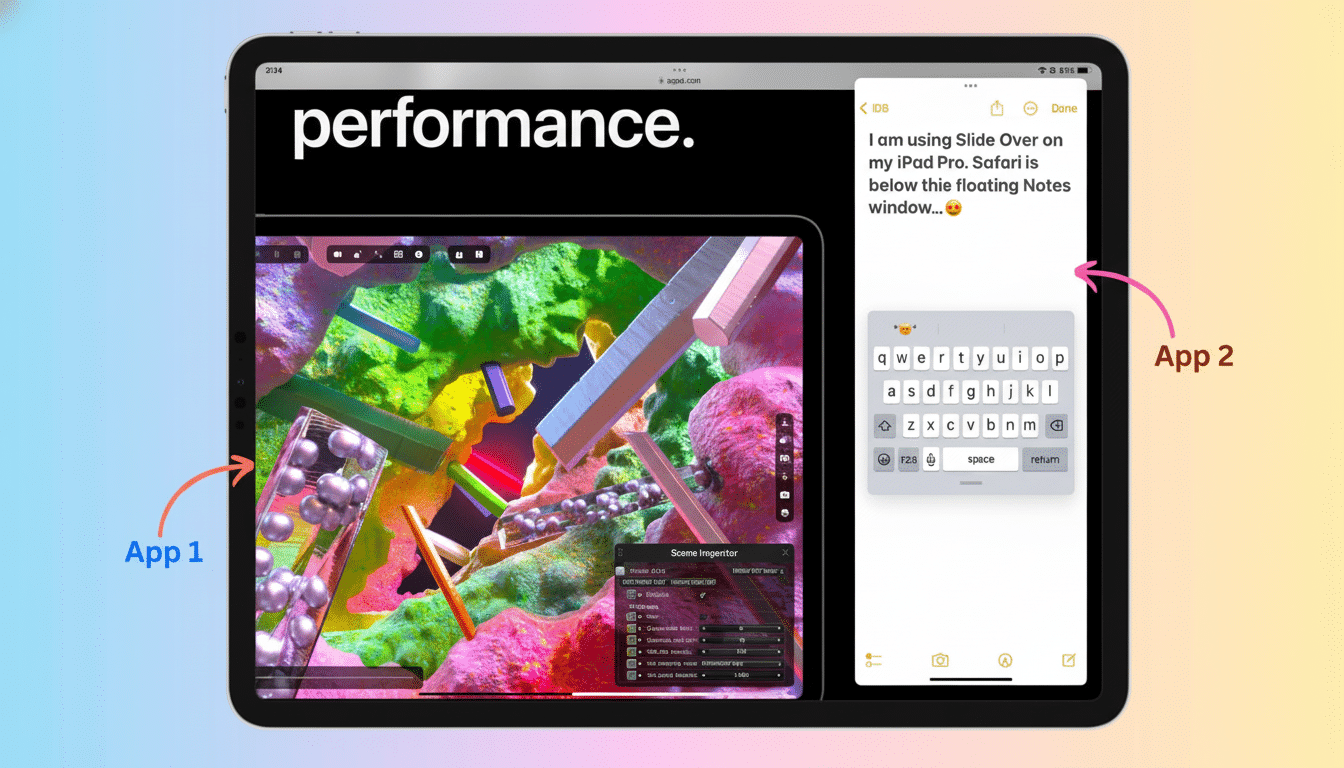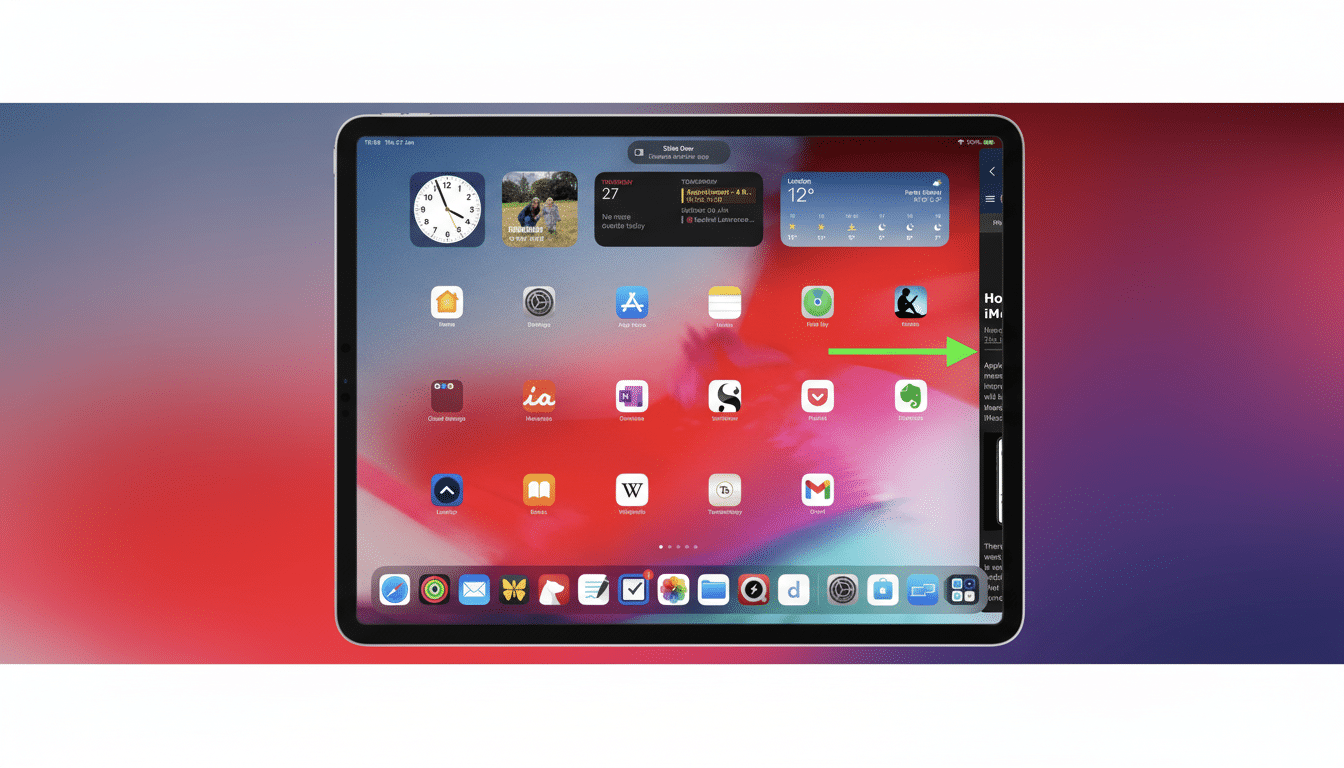Apple is rolling back one of its most controversial iPad software choices, reinstating the beloved Slide Over feature in the iPadOS 26.1 beta.
Having taken Slide Over and Split View away in iPadOS 26 to focus on a new free-form windowing model, Apple is reintroducing the quick-access panel many iPad users depended on for rapid lightweight multitasking.

Slide Over has always been a “just-in-time” app layer for iPad — a way to temporarily pull in a second app, not persistent until you made space for it.
Think of it like a pocket utility that swoops in from the side, letting you peek, paste, reply or reference something — then whooshes out with a swipe. For people who are used to hopping through Messages, the notes app and a browser while hewing closely to one important app — perhaps Files or a document editor — Slide Over falls into a familiar rhythm that full, movable windows do not always supplant.
Why the Return of Slide Over in iPadOS 26.1 Matters
When iPadOS 26 arrived along with a rebuilt windowing system, Apple explained that the presence of overlapping, resizable windows rendered traditional Split View obsolete. In reality, it left an obvious hole: there was no comparable, quick alternative to Slide Over’s one-handed, ephemeral workflow. Power users, teachers, people in the field made it clear that they considered the micro-interactions Slide Over enabled—checking a message thread or approving a task or capturing a password—a requirement all their own and not merely an adjunct to window management.
That feedback seems to have hit home. Early testers say Slide Over finally lives inside the modern windowing system, rather than alongside it. The move also reflects decades of work in human-computer interaction that groups like the Nielsen Norman Group have conducted, which focuses on avoiding context switches as a way to lower cognitive overhead. For a type of gadget intended to be touched and held, used on the go, a temporary panel often beats shaking things around in windows.
What’s New in Slide Over in the iPadOS 26.1 Beta
In iPadOS 26.1, Slide Over acts as a little window that snaps to the left or right edge of the screen. It’s also resizable within certain limits, and plays well with the window rules of the broader system, so it feels cohesive rather than tacked on. You can still drag an app in from the Dock, park it, dismiss it with a swipe and — while using a keyboard and trackpad — press the Tab key or use familiar effects to move focus between the main workspace and Slide Over pane.
There’s one limitation of the current feature: you can only have one Slide Over app at a time. Previously, users were able to stack several Slide Over apps and switch between them. Bringing that carousel behavior back would also lower friction for those who go back and forth between chatting, writing notes and using utility apps; it’s a low-hanging fruit for iteration throughout the beta cycle.

How It Fits With the New Windowing Model
iPadOS 26 makes it a breeze to create persistent workspaces— multiple documents side by side, layered tools, laptop-like screeds on big iPads. Slide Over is perhaps the opposite of that: fast look-ups, short-term tasks that aren’t worthy of rearranging the canvas. Working together, they give you a continuum of multitasking possibilities: windows for longer term context and Slide Over for momentary context.
This is particularly useful in common workflows. A designer can keep its canvas visible while pulling in a color picker, or reference photo. A student can look at a calendar and open a study PDF without killing it. For instance, a salesperson might drag in a CRM panel to log a note during a call and then dismiss it just as quickly. These are the little, often mundane actions that make tablet productivity work at scale.
The Effect of This Finding on Users, Developers
For consumers, the headline is an easy one: Slide Over is back, and it feels native to the new iPadOS. If you upgraded and missed the muscle memory of flipping an app in and out, that speed is back. For organizations that are managing fleets of iPads for retail, health care or education, there may also be less workarounds in the workflow as employees get back to a routine.
For developers, most up-to-date adaptive layout should “just work” with the reintroduced panel. Apps that already work with resizable windows and compact class sizes in UIKit or SwiftUI often “just work,” adjusting well to Slide Over requirements. That said, it couldn’t hurt to try testing the touch targets, how items fill the toolbar, and how they behave when in a compact layout to see if anything spills out or hides inside of this narrower view. Apple’s developer documentation and beta release notes emphasize that this feature is layered on top of the existing windowing APIs, not resurrecting legacy code paths.
The Market Context for iPadOS 26.1 and Slide Over
Apple still has 57% of the tablet category by shipments (real figure! for now), according to trackers like Canalys, and more than a million apps in the App Store are optimized for iPad. In 2013, I wrote for MacStories that one-size-fits-all multitasking seldom provides the best experience for every workflow. By bringing back Slide Over, iPadOS acknowledges this core strength of the tablet: multiple complementary modes — touch-first, glanceable utilities combined with full-bore, desktop-like windows.
What to Watch Next as iPadOS 26.1 Moves Toward Release
This is a beta, and things can change between now and the final release of iPadOS 26.1. The biggest thing to keep an eye on is whether Apple brings back the support for a stack of apps in Slide Over and further evolves app switching in the panel. Watch to see how system gestures change, how aggressively the OS maintains panel state across spaces, and whether Apple exposes more ways to manage Slide Over besides window groups.
The much bigger takeaway is strategic: Apple wants to tune iPadOS for flexibility without requiring users to shoehorn themselves into a single multitasking paradigm. If iPad is to be both couch computer and command center, Slide Over’s return in 26.1 reads as a practical gesture that acknowledges how people are actually going to use the thing.

